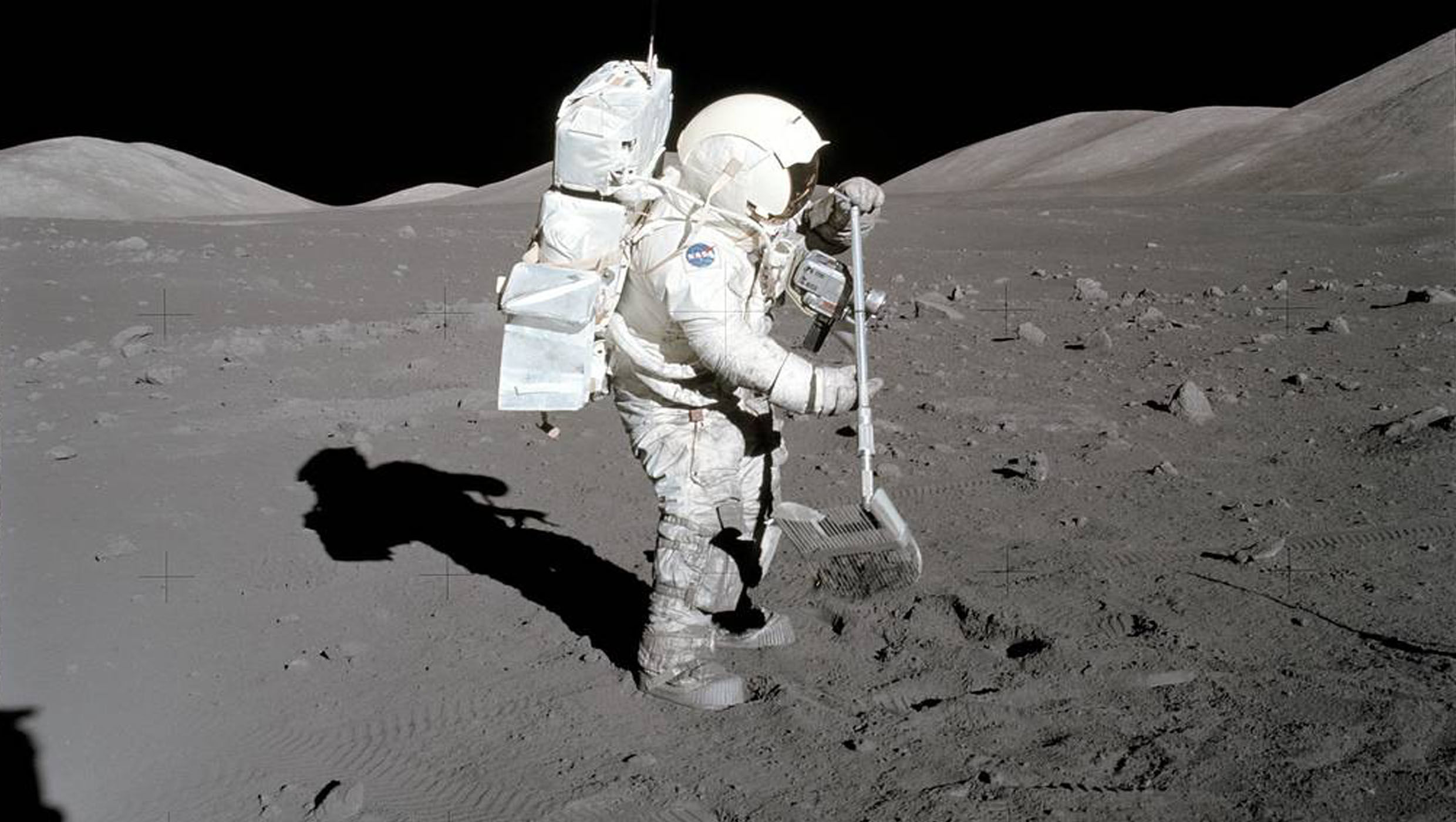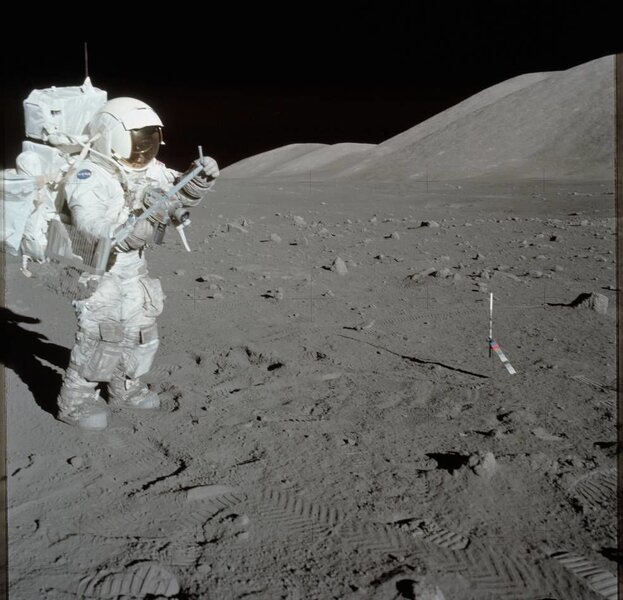Create a free profile to get unlimited access to exclusive videos, sweepstakes, and more!
NASA unearthing the secrets of untouched moon samples

The moon has been keeping secrets for billions of years, but we’ve had samples of lunar regolith right here on Earth that haven’t even been looked at since they were brought back from the Apollo missions almost 50 years ago.
These samples will finally speak to a number of teams selected from both NASA’s research centers and several university laboratories. The space agency’s Lunar Discovery and Exploration Program has awarded a total of $8 million to nine teams selected by its Planetary Science division, who will use these samples to study aspects of the moon’s geology up close.
Some of the samples were frozen or stored in helium. One vacuum-sealed sample from Apollo 17 has never even been exposed to our atmosphere, and six of the teams will be the first humans to touch it since mission astronauts brought it back to Earth.
That sample that has never even breathed the air of our planet is 800 grams of regolith still in the same “drive tube” that was pounded into the moon’s surface to extract a core of material that has preserved more than just the rocks and moon dust. It hasn’t emerged from NASA’s Johnson Space Center since it touched down in 1972. What is especially cool about this sample is that the actual stratigraphy from below the surface is still intact, which could hold valuable information about how the moon formed, as well as the time and duration of certain geological phases.
"By studying these precious lunar samples for the first time, a new generation of scientists will help advance our understanding of our lunar neighbor and prepare for the next era of exploration of the Moon and beyond," said Thomas Zurbuchen, associate administrator for NASA’s Science Mission Directorate. "This exploration will bring with it new and unique samples into the best labs right here on Earth."
While the moon may appear as a monotonously gray sphere pockmarked with craters, it is much more complex than what is visible to the naked eye. NASA has only brought back samples from a handful of lunar locations. There is much more of our satellite just waiting to be studied, as the space agency knows from remote sensing that has told scientists about the complexity of what looks like a deceptively simple cosmic object.
If satellites have been able to identify rocks and minerals that haven’t even been collected yet just from orbit, who knows what we’ll find when we finally put boots on the moon again.
“Returned samples are an investment in the future. These samples were deliberately saved so we can take advantage of today’s more advanced and sophisticated technology to answer questions we didn’t know we needed to ask,” said Lori Glaze, acting director of NASA’s Planetary Science Division.
Here’s an overview of what the Apollo Next Generation Sample Analysis teams will be digging into:
MOON WATER
At the NASA Ames Research Center/Bay Area Environmental Research Institute, Alexander Sehlke will lead a team whose mission is to complete an experiment started 50 years ago whose aim was to see how volatiles like water are stored on the moon’s radiation-bombed surface.
Jessica Barnes of the University of Arizona will lead a team that is looking to understand more about how minerals on the moon hold water through lunar minerals that contain hydrogen.
ROCKS AND MORE ROCKS
Another team at NASA Ames, led by David Blake and Richard Walroth, will study space weathering. NASA Goddard scientists led by Barbara Cohen and Natalie Curran will look deep into the geologic history of the Apollo 17 site by determining its age from the presence of certain gases.
Team lead Kees Welten of the University of California Berkeley and his researchers will study the effects of meteorites and micrometeorites head-butting the moon.
At the Planetary Science Institute of Mount Holyoke College, Darby Dyer will lead a team that will study micro-beads of glass that formed during ancient volcanic eruptions on the moon to get a better idea of the volcanic activity that went on shortly after the moon was born.
FROZEN IN TIME
At the U.S. Naval Research Laboratory, frozen lunar samples and samples stored in helium will be examined by a team led by Katherine Burgess to determine how exposure to space affects airless bodies.
A University of New Mexico team led by Chip Shearer will study samples from a “cold trap” on the moon where temperatures are low enough to freeze water—the first time ever a sample from a cold trap will be studied in a lab on Earth.
(via NASA)



























